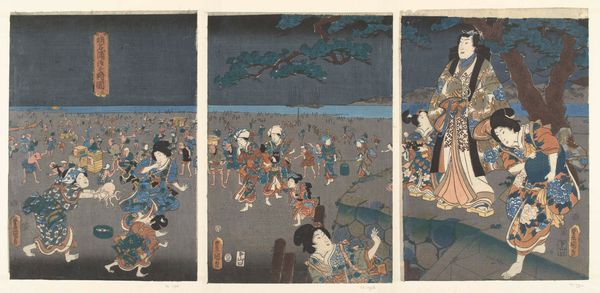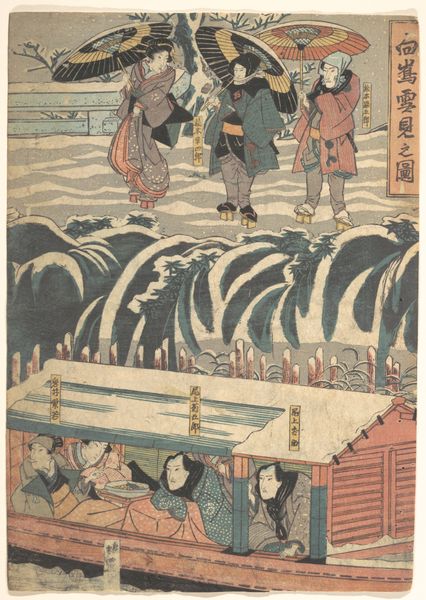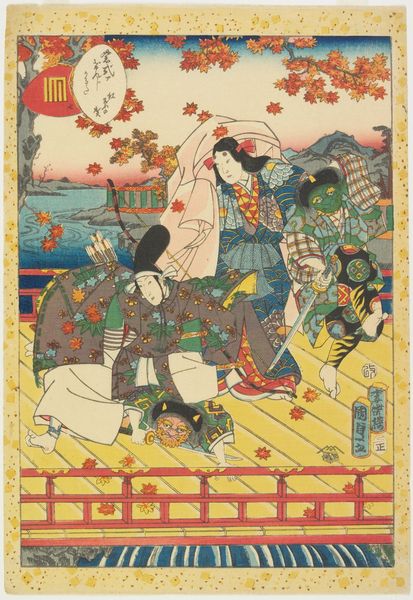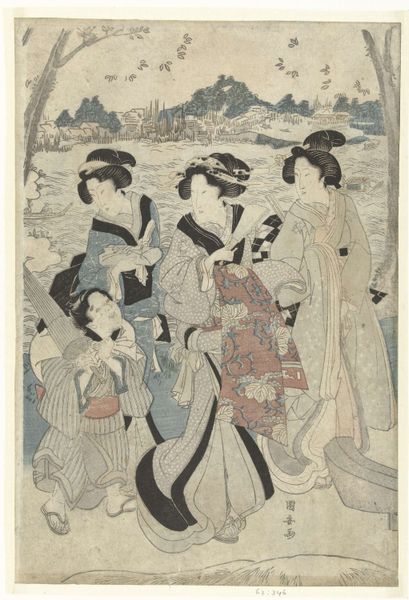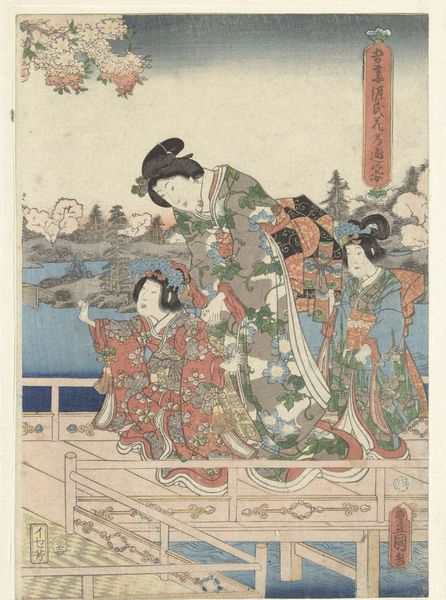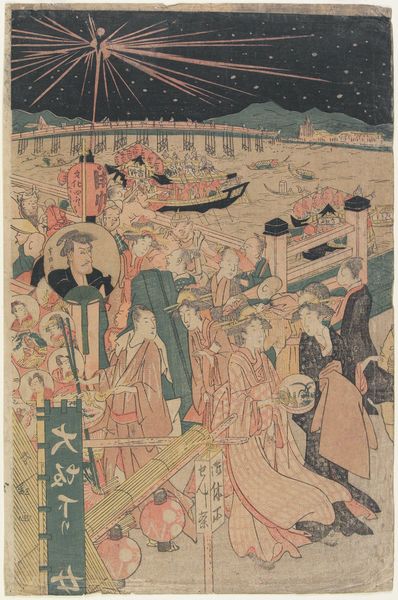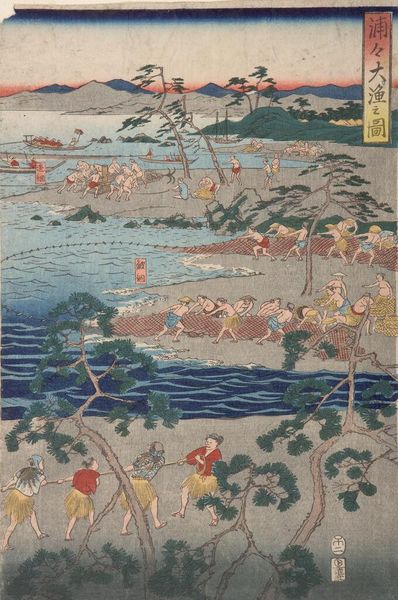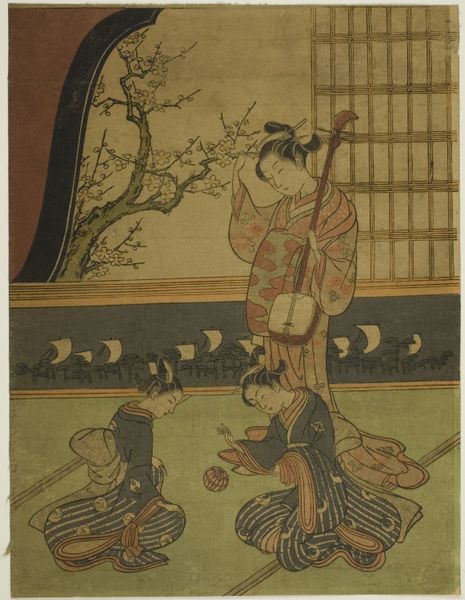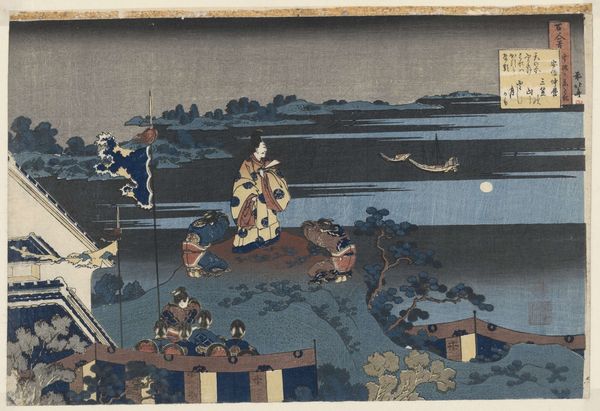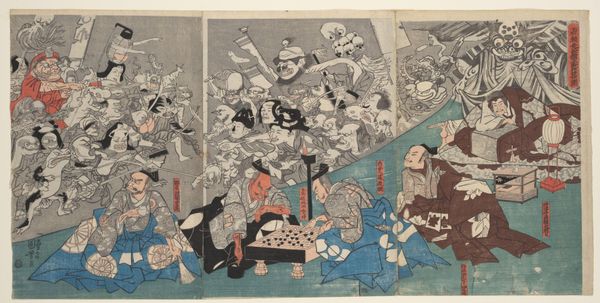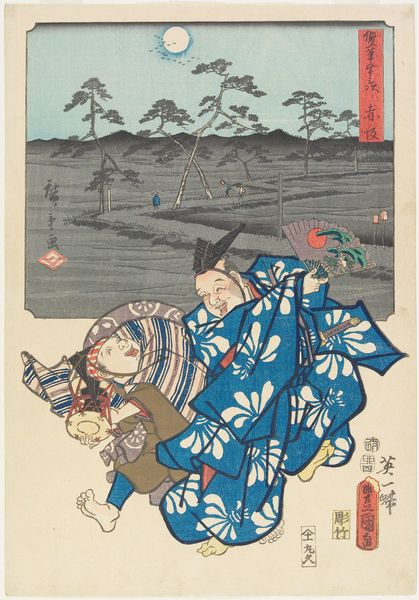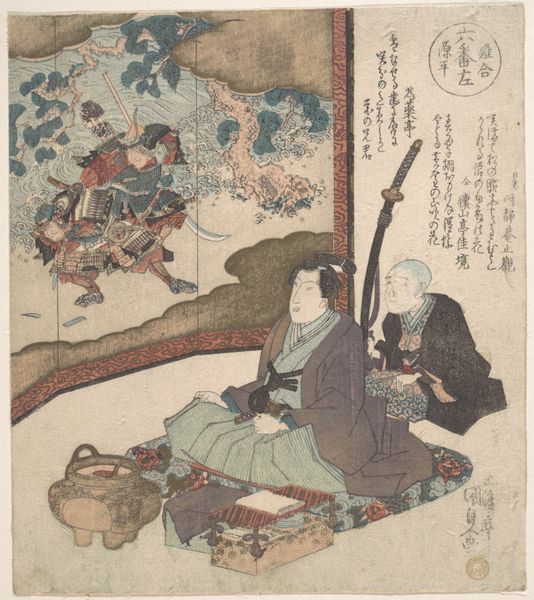
print, woodblock-print
#
water colours
# print
#
asian-art
#
landscape
#
ukiyo-e
#
figuration
#
coloured pencil
#
woodblock-print
#
genre-painting
Dimensions: height 355 mm, width 248 mm
Copyright: Rijks Museum: Open Domain
Editor: So, this woodblock print is titled "Schelpen rapen op het strand van Akashi" which translates to "Shell Gathering at Akashi Beach," and it’s by Utagawa Kunisada, created in 1855. I’m struck by how much is going on! What can you tell me about its cultural context? Curator: It's certainly a bustling scene. As a work of ukiyo-e, or "pictures of the floating world," this print captures a popular pastime enjoyed by all social classes. The activity of shell gathering, seemingly simple, was heavily influenced by socio-economic contexts, particularly during times when resources might have been scarce. Look at how different figures are attired; notice how certain families or individuals from certain trades had better access to specialized gathering tools. Does this tell you anything about the social dynamics depicted here? Editor: Hmm, I see what you mean. Some are finely dressed and others less so. I guess it’s not just a leisure activity. Did it also represent something symbolic, perhaps beyond mere resource gathering? Curator: Absolutely. These prints, distributed widely, not only documented but also shaped social values. The act of gathering was also a way of reinforcing social bonds, strengthening communal relationships across the whole culture. Editor: So the print’s accessibility and subject matter combined to solidify social structures? Curator: Precisely. And, thinking of today's context, one might even say that what this artist made almost two centuries ago created an image for promoting social inclusion while capturing all those at various economic strata engaging at their respective levels of engagement. It seems almost like an encouragement by popular figures in art circles. Editor: That’s fascinating, the thought of it acting almost as soft propaganda. It’s interesting to view an artwork like this as more than just art, it mirrors and affects social progress in its own ways, from its own unique position. Thanks for pointing this out.
Comments
No comments
Be the first to comment and join the conversation on the ultimate creative platform.
